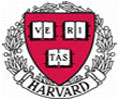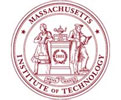|
- Calibasi Kocal G, Güven S, Foygel K, Goldman A, Chen P, Sengupta S, Paulmurugan R, Baskin Y, Demirci U.
Dynamic Microenvironment Induces Phenotypic Plasticity of Esophageal Cancer Cells Under Flow.
Sci. Rep. (2016) 6:38221. doi: 10.1038/srep38221.
- Kulkarni AA, Vijaykumar VE, Natarajan SK, Sengupta S, Sabbisetti VS.
Sustained inhibition of cMET-VEGFR2 signaling using liposome-mediated delivery increases efficacy and reduces toxicity in kidney cancer.
Nanomedicine (2016) 12(7):1853-1861.
- Kulkarni A, Natarajan SK, Chandrasekar V, Pandey PR, Sengupta S.
Combining Immune Checkpoint Inhibitors and Kinase-Inhibiting Supramolecular Therapeutics for Enhanced Anticancer Efficacy.
ACS Nano (2016) Sep 29.
- Kulkarni A, Pandey P, Rao P, Mahmoud A, Goldman A, Sabbisetti V, Parcha S, Natarajan SK, Chandrasekar V, Dinulescu D, Roy S, Sengupta S.
Algorithm for Designing Nanoscale Supramolecular Therapeutics with Increased Anticancer Efficacy.
ACS Nano (2016) 10(9):8154-68.
- Goldman A, Kulkarni A, Kohandel M, Pandey P, Rao P, Natarajan SK, Sabbisetti V, Sengupta S.
Rationally Designed 2-in-1 Nanoparticles Can Overcome Adaptive Resistance in Cancer.
ACS Nano (2016) 10(6):5823-34.
- Kulkarni A, Rao P, Natarajan S, Goldman A, Sabbisetti VS, Khater Y, Korimerla N, Chandrasekar V, Mashelkar RA, Sengupta S.
Reporter nanoparticle that monitors its anticancer efficacy in real time.
Proc. Natl. Acad. Sci. USA (2016) pii: 201603455.
[Featured in The Scientist, Science News, Science Daily, eCancerNews, Nanowerk, Phys.org, and Cell Chemical Biology (Editor's Choice)]
- Connor Y, Tekleab S, Nandakumar S, Walls C, Tekleab Y, Reiberger T, Husain A, Gadish O, Sabbisetti V, Kaushik S, Sehrawat S, Kulkarni A, Dvorak H, Zetter B, Jain RK, Edelman E, Sengupta S.
Physical nanoscale conduits-mediated communication between tumor cells and endothelium enables a metastatic hijack.
Nature Communications (2015) 6:8671.
[Featured in Harvard Gazette, MIT News, The Scientist (Editor's Choice), Genetic Engineering News, and CDMRP.]
- Majumder B, Baraneedharan U, Thiyagarajan S, Radhakrishnan P, Narasimhan H, Dhandapani M, Brijwani N, Pinto DD, Prasath A, Shanthappa BU, Thayakumar A, Surendran R, Babu GK, Shenoy AM, Kuriakose MA, Bergthold G, Horowitz P, Loda M, Beroukhim R, Agarwal S, Sengupta S, Sundaram M, Majumder PK.
Predicting clinical response to anticancer drugs using an ex vivo platform that captures tumour heterogeneity.
Nature Communications (2015) 6:6169.
- Goldman A, Majumder B, Dhawan A, Ravi S, Goldman D, Kohandel M, Majumder PK, Sengupta S.
Temporally sequenced anticancer drugs overcome adaptive resistance by targeting a vulnerable chemotherapy-induced phenotypic transition.
Nature Communications (2015) 6:6139.
[Featured in Science Daily and Tech Times.]
- Pandey A, Kulkarni A, Roy B, Goldman A, Sarangi S, Sengupta P, Phipps C, Kopparam J, Oh M, Basu S, Kohandel M, Sengupta S.
Sequential application of a cytotoxic nanoparticle and a PI3K inhibitor enhances antitumor efficacy.
Cancer Res. (2014) 74(3):675-85.
- Kulkarni AA, Roy B, Rao PS, Wyant GA, Mahmoud A, Ramachandran M, Sengupta P, Goldman A, Kotamraju VR, Basu S, Mashelkar RA, Ruoslahti E, Dinulescu DM, Sengupta S.
Supramolecular nanoparticles that target phosphoinositide-3-kinase overcome insulin resistance and exert pronounced antitumor efficacy.
Cancer Res. (2013) 73(23):6987-97
- Sengupta S, Kulkarni A.
Design principles for clinical efficacy of cancer nanomedicine: a look into the basics.
ACS Nano (2013) 7(4):2878-82.
- Sengupta P, Basu S, Soni S, Pandey A, Roy B, Oh MS, Chin KT, Paraskar AS,
Sarangi S, Connor Y, Sabbisetti VS, Kopparam J, Kulkarni A, Muto K,
Amarasiriwardena C, Jayawardene I, Lupoli N, Dinulescu DM, Bonventre JV,
Mashelkar RA, Sengupta S.
Cholesterol-tethered platinum II-based supramolecular nanoparticle increases antitumor efficacy and reduces nephrotoxicity.
Proc. Natl. Acad. Sci. USA (2012) 109:11294-9.
- Sinha Roy R, Soni S, Harfouche R, Vasudevan PR, Holmes O, de Jonge H, Rowe A,
Paraskar A, Hentschel DM, Chirgadze D, Blundell TL, Gherardi E, Mashelkar RA, Sengupta S.
Coupling growth-factor engineering with nanotechnology for therapeutic angiogenesis.
Proc. Natl. Acad. Sci. USA (2010) 107(31):13608-13.
- Paraskar AS, Soni S, Chin KT, Chaudhuri P, Muto KW, Berkowitz J, Handlogten MW,
Alves NJ, Bilgicer B, Dinulescu DM, Mashelkar RA, Sengupta S.
Harnessing structure-activity relationship to engineer a cisplatin nanoparticle for enhanced
antitumor efficacy.
Proc. Natl. Acad. Sci. USA (2010) 107(28):12435-40.
[Featured in Harvard Gazette and MIT News.]
- Chaudhuri P, Harfouche R, Soni S, Hentschel DM, Sengupta S.
Shape effect of carbon nanovectors on angiogenesis.
ACS Nano (2010) 4(1):574-82.
- Harfouche R, Hentschel D, Piecewicz SM, Basu S, Print C, Eavarone D,
Kiziltepe T, Sasisekharan R, Sengupta S.
Glycome and transcriptomal regulation of vasculogenesis.
Circulation (2009) 120(19):1883-92.
- Chaudhuri P, Paraskar A, Soni S, Mashelkar RA, Sengupta S.
Fullerenol-Cytotoxic Conjugates for Cancer Chemotherapy.
ACS Nano (2009) 3(9):2505-14.
- Basu S, Harfouche R, Soni S, Chimote G, Mashelkar RA, Sengupta S.
Nanoparticle-mediated targeting of MAPK signaling predisposes tumor to
chemotherapy.
Proc. Natl. Acad. Sci. USA (2009) 106(19):7957-61.
[Featured in
HarvardScience,
USNews,
The Telegraph, etc.]
- Sengupta S, Eavarone DA, Capila I, Zhao G, Watson N, Kiziltepe T, Sasisekharan R.
Novel cancer therapy through temporal targeting of both tumor cells and neovasculature using a unique nanoscale delivery system.
Nature (2005) 436:568-72.
[Featured in
Nature News and Views, Tech Review, MIT website Spot Light, BBC, MSNBC, FOX TV,
The Telegraph, Boston Globe, etc.]
- Sengupta S, Toh SA, Sellers LA, Skepper JN, Koolwijk P, Leung HW, Yeung HW, Wong RNS, Sasisekharan R, Fan TP.
Modulating angiogenesis - The yin and the yang in ginseng.
Circulation (2004) 104:1219-1225.
[Featured in Science Editor's Choice (10th Sep),
Forbes (7th Sep), Washington Post (30th Aug), US Today, Petra (5th Sep, Greece), Folca (Brazil), Tech Review (Jan 05), U.S. Department of State release (31st Aug), NIGMS press release.]
- Qi Y, Zhao G, Liu D, Shriver Z, Sundaram M, Sengupta S, Venkataraman G, Langer R, Sasisekharan R.
Delivery of therapeutic levels of heparin and low molecular weight
heparin through a pulmonary route.
Proc. Natl. Acad. Sci. USA (2004) 101:9867-9872.
- Sengupta S, Kiziltepe T, Sasisekharan R.
A dual color fluorescence imaging-based system for the dissection of the antiangiogenic and chemotherapeutic properties of molecules.
FASEB J. (2004) (doi:10.1096/fj.04-1934fje)
- Johnson NA, Sengupta S, Saidi SA, Lessan K, Charnock-Jones SD, Scott L, Stephens R, Freeman TC, Tom BDM, Harris M, Denyer G, Sundaram M, Sasisekharan R, Smith SK, Print CG.
Endothelial cells preparing to die by apoptosis initiate a program of
transcriptome and glycome regulation.
FASEB J. (2004) 18:188-190.
- Sengupta S, Sellers LA, Cindrova T, Skepper JN, Gherardi E, Sasisekheran R, Fan
TP.
Cyclooxygenase-2-selective non steroidal anti-inflammatory drugs inhibit hepatocyte growth factor/scatter factor-induced angiogenesis.
Cancer Res. (2003) 63:8351-8359.
- Sengupta S, Sellers LA, Li R, Zhao G, Gherardi E, Sasisekharan R, Fan TP. Targeting of mitogen activated protein kinases and phosphatidylinositol 3 kinase inhibits hepatocyte growth factor/scatter factor-induced angiogenesis. Circulation (2003) 107:2955-2961.
|
|







